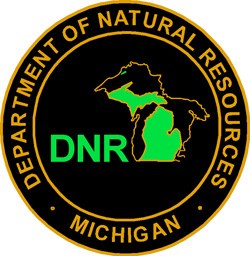NEWS RELEASE
MICHIGAN DEPARTMENT OF NATURAL RESOURCES
**************************** DNR preliminary estimates show firearm deer harvest declines 10 to 20 percent from last year
Initial estimates indicate Michigan firearm deer hunters killed 10 to 20 percent fewer deer this year than in 2008, according to the Department of Natural Resources.
Decreased harvests were most noticeable in the Upper Peninsula and less apparent in the southern Lower Peninsula.
Weather - both a harsh 2008-2009 winter and unseasonably high temperatures during most of the firearm season - likely contributed to the decreased harvest, wildlife officials said.
Although weather across the state was good to ideal for hunters to sit in the woods, it was less than optimal for encouraging deer movement.
DNR biologists estimate the harvest was down by 20 to 30 percent in the Upper Peninsula, 15 to 25 percent in the northern Lower Peninsula, and 5fiveto 10 percent in the southern Lower Peninsula.
"The season has gone pretty much as we expected in the Upper Peninsula," said DNR deer program leader Brent Rudolph. "We set antlerless quotas lower in anticipation of a smaller deer herd following last winter. We may have had fewer hunters in the Upper Peninsula. If you have fewer deer, fewer hunters, and deer moving less than usual, those factors are going to have an effect on your deer harvest."
Biologists were a little surprised by the size of the decrease of the harvest in the northern Lower Peninsula, where a more modest decline was anticipated.
"Check stations reported a lower than usual percentage of 1-1/2-year-old bucks in the Upper and northern Lower Peninsula, an indication of poor survival of last year's fawns," Rudolph said. "Antler development was below average as well, another indication of the impact of last winter's severity."
In southern Michigan, a cool summer that caused corn to mature late and a wet October put the corn harvest far behind schedule, providing additional sanctuary for deer in many areas.
"The corn harvest was around 35 percent by Nov. 16," Rudolph said. "In an average year it's 80 percent. So it's likely that some deer never left the standing corn. That may become apparent during the muzzleloader season."
Rudolph emphasized the preliminary estimates show a wide range in the harvest because of changes in data collection this season.
"Because we operated so many fewer deer check stations, we could not utilize the models as we have in previous years for our preliminary estimate of the firearm season harvest," he said. "But we'll have solid numbers next spring after the mail survey is completed and those are the numbers we use for making management decisions."
The DNR is committed to the conservation, protection, management, accessible use and enjoyment of the state's natural resources for current and future generations.
****************************
